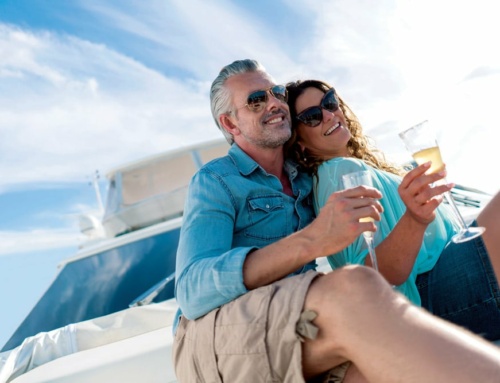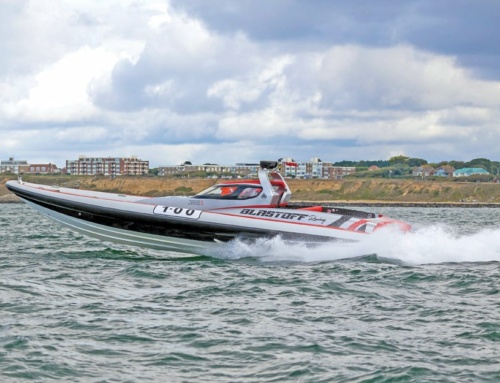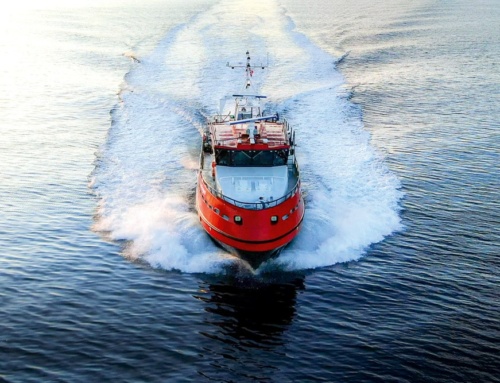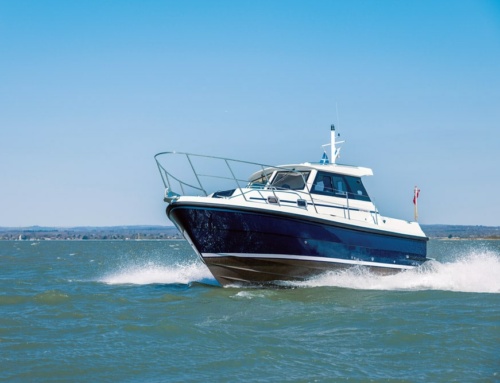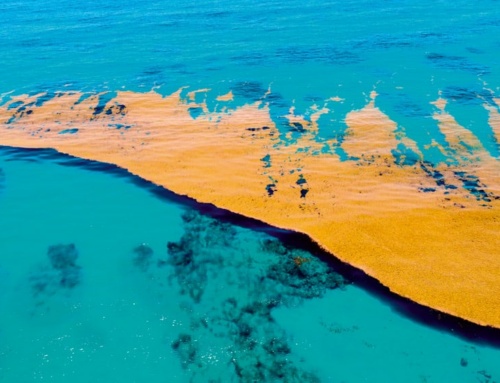- … they move slowly and basically spend their days eating, sleeping, taking mud baths and having sex when the mood takes them.
- There is something prehistoric about these dragon-like creatures and they are fascinating to watch.
- The wildlife encounters were overwhelming. These animals have no fear of humans and do not race off when people appear.
Galápagos Landing
PBR’s ‘foreign correspondent’ recounts her recent experience of landing on the famed Galápagos Islands via the ‘Celebrity Xpedition’s’ Zodiac RIBs to explore the archipelago’s unique sights and natural wonders.
The ecosystem of the Galápagos is extremely fragile and there are many rules in existence to protect the wildlife and their incredible habitat. The main one is that it is forbidden to touch any of the birds or mammals – even though to a large extent they show little fear and will approach you. Sea lions, for example, are adorable creatures and will sometimes come up close, but they can still give you a nip, which tends to discourage you from trying to pop one of the cuddly babies in your backpack!
There is a limit on the number of boats that can visit any island at any given time and this is strictly controlled by the Galápagos National Park Authority, with times being rigorously adhered to. During our trip, visits each day were with experienced naturalists, the majority of whom were either from the islands or had a long-standing association with them. The Xpedition would moor away from the locations and each journey to and from the islands was undertaken by Zodiac RIBs.
We set off from Heathrow, stopped briefly in Amsterdam, and then took the very long flight to Quito, the capital of Ecuador. Our tour group, Readers Offers, provided accommodation at the Marriott Hotel in Quito. The new airport is approximately an hour out of the city, and crossing the bridge over the ravine when entering the city is not a sight for the faint-hearted! Quito is 9,000 feet above sea level, and although we didn’t have a problem, many in our party experienced headaches and a slight feeling of nausea – altitude sickness. It is worthwhile going slowly and taking a trip to cross the equator. A unique experience!
After a short flight from Quito we landed on the island of Baltra, where we were taken to the little harbour by bus, followed by our first ride on a RIB to the ship. It was unusual to see another RIB loaded with our suitcases racing us to the vessel, all of us hoping that they were very well secured! Once on board, the ship made a short trip to Daphne Island, which we circumnavigated and where we spoke to the various naturalists who were on hand to point out the wildlife and answer our questions. Sightings of sea lions, pelicans and blue-footed boobies whetted our appetites for the week. We felt as if we were following in the footsteps of Charles Darwin!
We had been given good advice about what to wear and the footwear that was needed to cope with the varying terrain. Before each trip we were advised whether or not it was to be a wet or dry landing from the Zodiac. The helmsmen took us as close as possible to each location and held the RIBs extremely steady as we either clambered over the side into ankle-deep water off a beach or stepped up onto rocks.
The wildlife encounters were overwhelming. These animals have no fear of humans and do not race off when people appear. The sea lions were in abundance on virtually every island we visited – the highlight being a trip to a fish market on Santa Cruz where a sea lion rested under an open-air counter waiting for scraps! It was competing with a heron and two pelicans that were equally determined to get the ‘lion’s’ share … Our health and safety people and the Food Standards Agency would have had a combined fit!
Elizabeth Bay off Isabela Island is one of the westernmost points in the Galápagos. We took a scenic Zodiac ride and discovered sea turtles, rays and the amazing sight of a sea lion taking a break from the heat of the day in a tree! The birdlife is also spectacular and the pelicans in particular are much in evidence – flying close, being curious in the water with snorkellers and nesting in the trees.
As previously intimated, the RIBs were driven by experienced helmsmen who managed to negotiate the positioning of these vessels whatever the sea state. There were approximately 14 people on board, plus the helmsman and the naturalist – all of us fully equipped with life jackets and given clear safety instructions. These guys were amazing with their handling skills – manoeuvring the RIBs into some really tricky situations in sometimes busy seas, and always making sure that those on both sides of the RIB had the opportunity to take the pictures that they wanted if we were unable to disembark.
Las Bachas in Santa Cruz has one of the most beautiful white sandy beaches, and behind it are ponds that frequently have flamingos feeding in the shallows. We were delighted that they turned out for us on the day of our visit.
If we were to highlight a particular island it would have to be North Seymour – home to an extremely large colony of frigate birds. The males try to impress potential mates by inflating a bright-red neck pouch, and we were lucky enough to see many males doing a lot of impressing! Sea lions were once again in abundance, as were both marine iguanas and their much larger, more camouflaged relatives, land iguanas. There is something prehistoric about these dragon-like creatures and they are fascinating to watch.
The Charles Darwin Research Station is at Puerto Ayora on Santa Cruz and it is also the home of the famous giant tortoise breeding centre. A hundred years ago, whalers decimated the population of these incredible creatures by capturing them for food, and there is a programme to rebuild the numbers and reintroduce them to the islands where they belong. They are wonderful, steady animals who can live up to 150 years in the wild – but then their lives have no stress; they move slowly and basically spend their days eating, sleeping, taking mud baths and having sex when the mood takes them. No wonder they have long and happy lives!
The Galápagos Islands resemble the shape of a sea horse with add-ons! We visited Baltra, Daphne, Rábida, Isabela, Santiago, Bartolomé, Santa Cruz, North Seymour and San Cristóbal, and returned via a different location on Santa Cruz. The excursions we enjoyed would not have been possible without the Zodiacs, and we were very grateful to the guys who undertook the tricky job of helping to please the tourists by searching out wildlife, mooring in difficult locations, holding the RIBs steady for disembarking and generally making the whole experience truly memorable.
Baltra was our final destination, where we disembarked to take our return flight to Quito, followed by another day at the Marriott to unwind, visit the craft market and try our hand at a bit of bartering, while marvelling at our memories, before returning to the normality of London.
Galápagos Islands fact file
The Galápagos Islands (official name: Archipiélago de Colón, part of the Republic of Ecuador) are an archipelago of volcanic islands distributed on either side of the equator in the Pacific Ocean, some 563 miles west of continental Ecuador. The islands are known for the large amount of rare and wonderful animal life famously studied by Charles Darwin during the second voyage of HMS Beagle in 1835. The first recorded visit to the islands, however, was made in 1535, and the first map, though crude, was produced in 1684 by the buccaneer Ambrose Cowley, who named the individual islands after his fellow pirates!
The Galápagos are highly volcanic, and due to the thin oceanic crust common to this region the nine active volcanos here in the archipelago erupted 24 times between 1961 and 2011. The islands are to be found at the coordinates 1°40’N–1°36’S, 89°16’–92°01’W. Straddling the equator, islands in the chain are located in both the northern and southern hemispheres, with Volcán Wolf and Volcán Ecuador on Isla Isabela being directly on the equator itself. Española Island, the southernmost islet of the archipelago, and Darwin Island, the northernmost isle, are spread out over a distance of 220km. Although the islands are located on the equator, the Humboldt Current brings cold water to them, causing frequent drizzly weather and much fog too during the season known as the garúa (June to November). At this time of year the sea temperature is 22°C (72°F), with prevailing oceanic swells running up from the south and south-east. During the warm season (December to May), however, the average sea and air temperature rises to 25°C (77°F), with little wind and a fair degree of sunshine.


